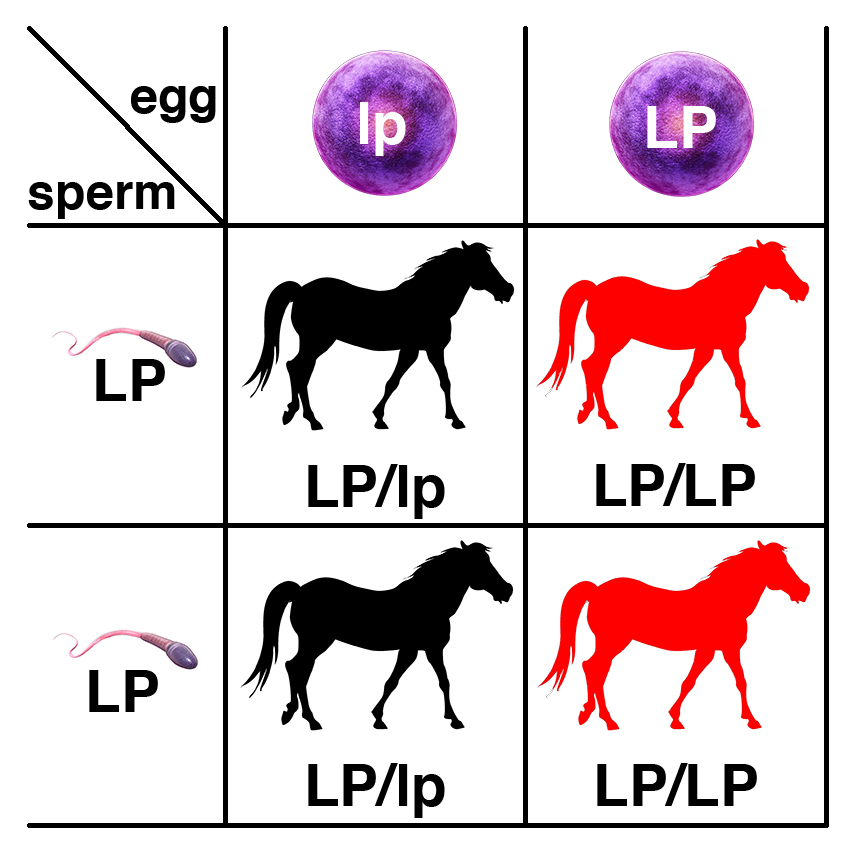| Contents |
|---|
| Congenital Stationary Night Blindness (CSNB) |
| Summary |
| Understanding the Results |
| Disease Name and Genes |
| Inheritance |
Congenital Stationary Night Blindness (CSNB)
Summary
Congenital Stationary Night Blindness (CSNB) is an inherited condition characterized by impaired vision in dark conditions. It is present at birth and is nonprogressive. There are no ophthalmic abnormalities on clinical examination of affected horses; diagnosis is confirmed by electroretinography (ERG). The condition is associated with homozygosity for the Leopard Complex spotting allele (LP) that is common in Appaloosas.
Date of Last Update: 08/02/2016
Results
Understanding the Results
Results of the genetic test for CSNB are presented as shown below.
| Congenital stationary night blindness (CSNB) | ||
|---|---|---|
| lp/lp | Clear | This horse tested negative for LP. |
| LP/lp | Carrier | Both the normal and mutant alleles are present. This horse is positive for the LP mutation but will not develop symptoms. |
| LP/LP | Affected | This horse carries two copies of the LP mutation and will develop CSNB. |
Disease Name and Genes
Congenital Stationary Night Blindness (CSNB) is caused by a 1378 bp insertion in the Transient Receptor Potential Cation Channel, Subfamily M, Member 1 (TRPM1) gene. The insertion is a long terminal repeat (LTR) of an endogenous retrovirus that disrupts TRPM1 transcription by premature polyadenylation. While CSNB is fully recessive, this TRPM1 allele produces a dominant white-spotting phenotype, Leopard Complex spotting (LP).
Inheritance
Congenital stationary night blindness (CSNB) is caused by a recessive variant of the TRPM1 gene that has a dominant effect on coat color. The variant allele that is recessive with respect to CSNB is dominant with respect to coat color, and is commonly abbreviated as LP, with the wild-type allele abbreviated as lp.

Carriers of the recessive allele (LP/lp) have no symptoms of the disease. If two carriers are bred, each foal has a 25% chance of having two copies of the normal allele (lp/lp), a 50% chance of being a carrier (LP/lp), and a 25% chance of being affected (LP/LP).

If an affected horses (LP/LP) is bred to a carrier (LP/lp), each foal has a 50% chance of being a carrier (LP/lp), and a 50% chance of being affected (LP/LP).

If two affected horses (LP/LP) are bred, every foal will be affected (LP/LP).

If a carrier of the recessive allele (LP/lp) is bred to a normal horse (lp/lp), each foal has a 50% chance of having two copies of the normal allele (lp/lp) and a 50% chance of being a carrier (LP/lp).





